Flame Bowerbird
- December 6, 2023
- 0 comment
The flame bowerbird(Sericulus ardens), It is one of 10 species of bowerbirds in the genus Sericulus, which are all known for their elaborate bowers and colorful plumage. The flame bowerbird is endemic to New Guinea, where it is found in rainforests at elevations up to 1,500 meters (4,900 feet).
Physical Appearance
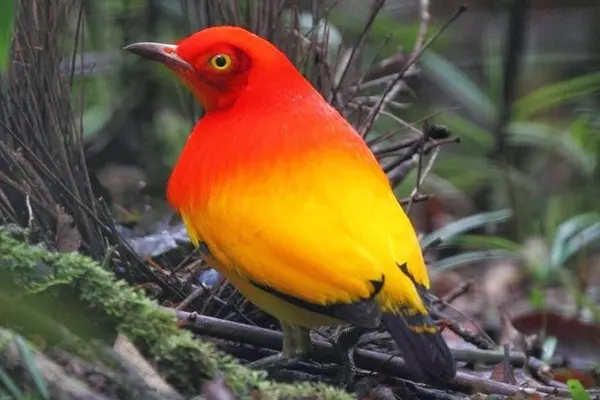
Flame Bowerbird
- Lifespan: 8-9 years
- Habitat: Rainforests and tall moist sclerophyll forests in eastern Australia.
- Diet: Omnivorous, eating fruits, insects, and other invertebrates.
- Size: 35 cm
- Weight: Male: 280-380 grams, Female: 220-280 grams
- Wingspan: Males: 68-78 cm, 60-68 cm
- Conservation Status: Least Concern.
- Population Trend: Stable.
One of the most distinctive features of the flame bowerbird is its elaborate bower. Bowers are structures built by male flame bowerbirds to attract mates. Flame bowerbird bowers are typically oval-shaped and made from sticks and leaves. They are decorated with a variety of colorful objects, such as blue berries, beetles, and shells.
Species Type
The flame bowerbird (Sericulus ardens) is a species of passerine bird in the family Ptilonorhynchidae, native to rainforests of southern New Guinea. It is one of the most brilliantly colored bowerbirds, with males having a striking black, yellow, and orange plumage. Females are much more subdued in their coloration, with a mixture of olive-green, brown, and buff.
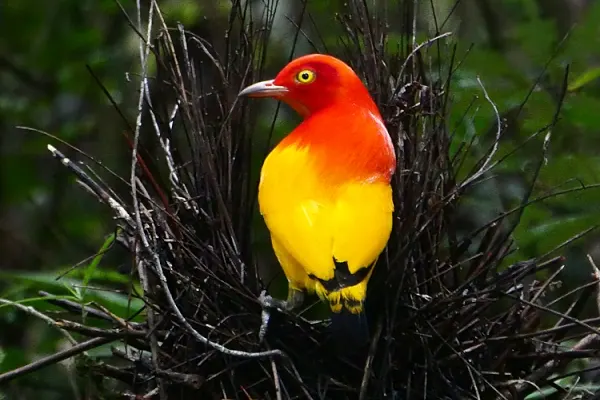

- Kingdom: Animalia
- Phylum: Chordata
- Class: Aves
- Order: Passeriformes
- Family: Ptilonorhynchidae
- Genus: Sericulus
- Species: Sericulus ardens
The flame bowerbird is a sexually dimorphic species, meaning that males and females have different physical appearances. Males are larger and more brightly colored than females. They are also the ones who build elaborate bowers to attract mates.
Feather Coloration
The female’s more muted coloration serves a camouflage purpose. Their olive-green, brown, and buff plumage blends seamlessly with the rainforest foliage, making them less visible to predators. This is particularly important during the nesting season when females are incubating eggs and caring for young. The subdued coloration also helps to conceal the female’s presence from potential rivals, allowing her to focus on raising her offspring without interference.
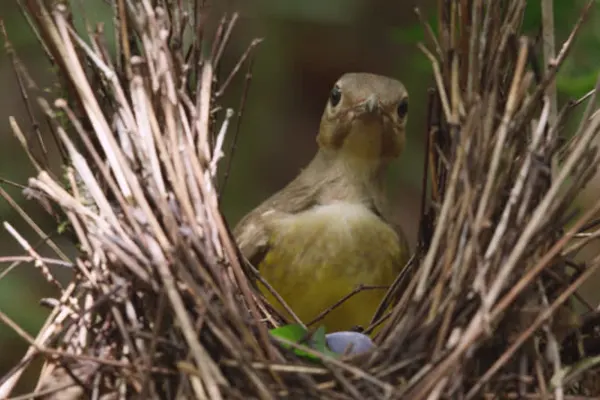
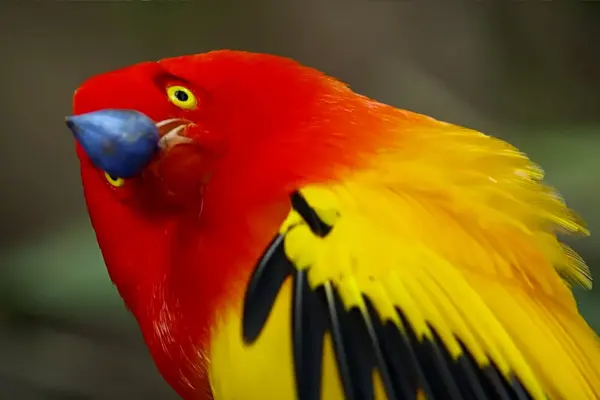
The male’s vibrant plumage plays a crucial role in attracting mates. Their black heads and upper backs create a dramatic backdrop for the fiery orange of their breasts and bellies. The rich golden yellow of their wings and tails further enhances their visual appeal. This combination of colors is thought to signal the male’s health, vitality, and reproductive potential, making him an attractive mate choice for females.
Flight Characteristics
Flame bowerbirds are well-adapted for flight within their rainforest habitat. Their strong, agile flight allows them to navigate through the dense canopy and seek out food and mates efficiently.
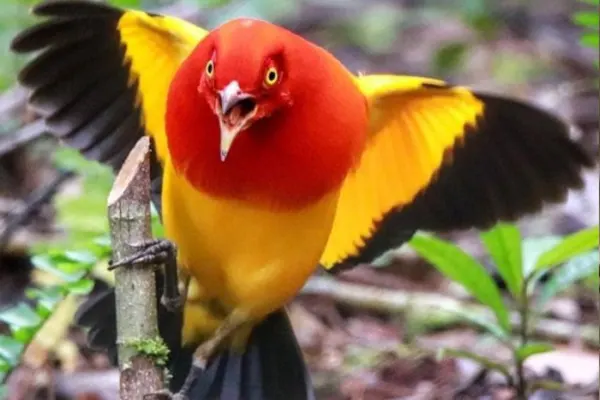
- Flight Style: Flame bowerbirds typically engage in short, direct flights between trees and other perches. They have a direct, undulating flight pattern, with short bursts of rapid wing beats followed by gliding phases. This flight style allows them to maneuver quickly through the dense understory and avoid obstacles.
- Flight Speed: While their exact flight speed has not been precisely measured, flame bowerbirds are estimated to fly at around 30-40 kilometers per hour (18-25 miles per hour). This speed allows them to cover distances efficiently within their rainforest habitat.
- Flight Adaptation: Their wings are relatively short and rounded, providing them with the maneuverability needed to navigate through the cluttered rainforest environment. Their tail feathers are also relatively short, which helps to reduce drag and allow for quick changes in direction.
- Altitude: Flame bowerbirds typically fly at low altitudes, primarily within the rainforest canopy. They rarely venture into open areas or at high altitudes.
- Energetics: Flame bowerbirds are efficient fliers, expending relatively little energy during flight. This is due to their streamlined body shape, strong flight muscles, and efficient flight pattern.
Migration Patterns
Flame bowerbirds (Sericulus ardens) are resident birds, meaning they do not migrate seasonally. They remain within their established territories throughout the year. This is primarily due to the abundance of food and favorable climate conditions within their rainforest habitat in southern New Guinea. Primarily feed on fruits, berries, and invertebrates, which are readily available throughout the year in the rainforest. Their resident status also allows them to maintain their elaborate bowers, which are essential for attracting mates and ensuring reproductive success.
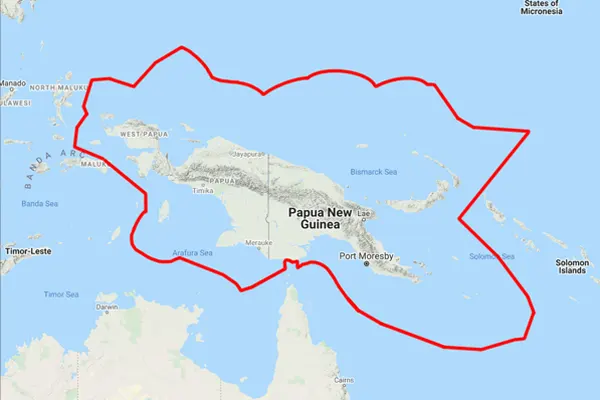
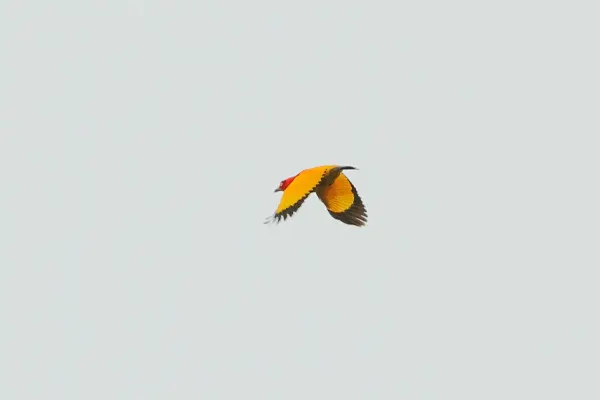
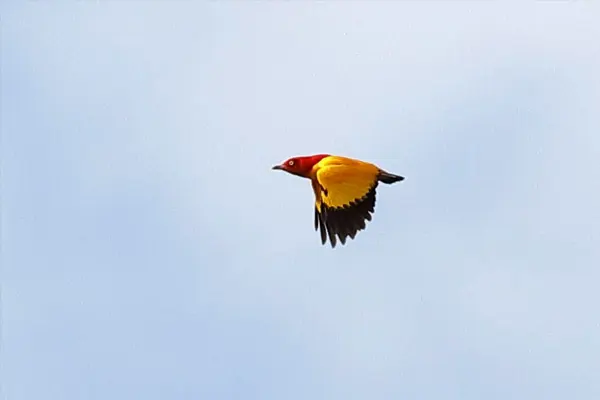
While flame bowerbirds do not migrate in the traditional sense, they may engage in short-distance movements within their home ranges. These movements are typically driven by food availability and reproductive needs. For instance, during periods of fruit scarcity, they may move to areas with more abundant food sources. Additionally, males may expand their ranges during the breeding season to seek out potential mates.
Overall, flame bowerbirds are well-adapted to their rainforest habitat and exhibit a resident pattern of movement. Their non-migratory lifestyle allows them to maximize their reproductive success and maintain their elaborate bowers within their established territories.
Habitat & Distribution
Flame bowerbirds (Sericulus ardens) are endemic to southern New Guinea, primarily inhabiting the lowlands and foothills of the rainforest biome. They typically occupy elevations ranging from sea level to 1,500 meters (4,900 feet). Their distribution encompasses a broad area, stretching from the Mimika River in the west to the Fly River in the east and southward to the Morehead area.
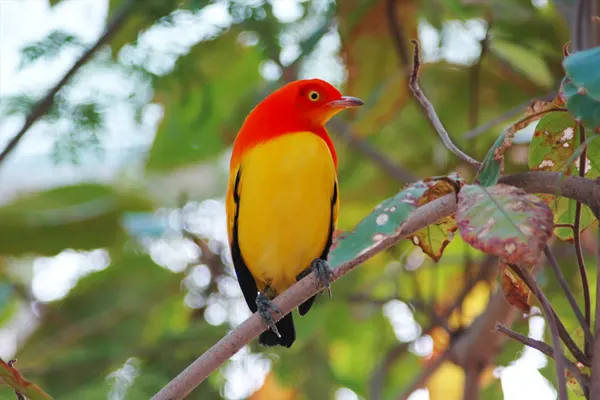

Their preferred habitat consists of dense, mature rainforests, characterized by a rich diversity of plant life and a closed canopy that provides ample shade and protection from predators. These rainforests offer an abundance of food sources, including fruits, berries, and invertebrates, which form the foundation of the flame bowerbird’s diet.
Within these rainforests, flame bowerbirds are typically found in areas with well-developed understory vegetation. This dense undergrowth provides them with nesting sites and protection from predators. They also frequent areas near streams and rivers, as these habitats offer an abundance of insects and other food sources.
While flame bowerbirds are primarily associated with undisturbed rainforests, they can also be found in areas of secondary forest that have retained sufficient structural complexity and food resources. They may also occasionally venture into open areas adjacent to their rainforest habitat, particularly if these areas offer suitable food sources.
Behavioral Traits
The behavioral traits of flame bowerbirds reflect their remarkable adaptations to life in the rainforest environment. Their elaborate courtship displays, cooperative breeding system, and diverse foraging strategies demonstrate their intelligence, sociality, and ecological significance. As a charismatic and ecologically important species, flame bowerbirds serve as ambassadors for the conservation of rainforest ecosystems.
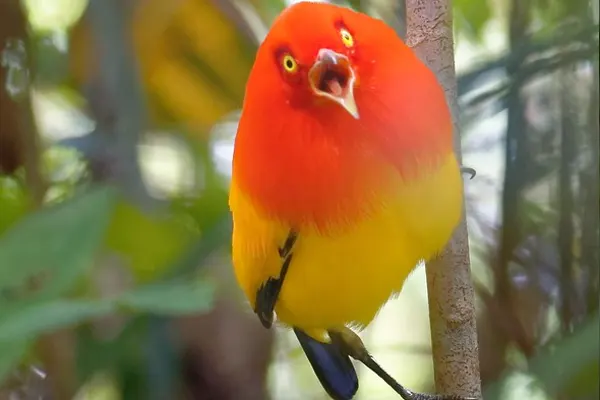
- Bowers as a Reflection of Intelligence: The construction and decoration of bowers require a level of intelligence and creativity that is not found in most bird species. Males must select appropriate materials, arrange them aesthetically, and maintain the bower’s integrity throughout the breeding season. This complex behavior suggests that flame bowerbirds have well-developed cognitive abilities.
- Cooperative Breeding: Flame bowerbirds exhibit a unique form of cooperative breeding known as “quasi-cooperativeness”. In this system, a dominant male establishes a central bower and attracts multiple female mates. These females, often related to each other, collaborate in raising the offspring, sharing the responsibilities of nest building, incubation, and chick feeding.
- Parental Care and Anti-Predation Strategies: Female flame bowerbirds invest significantly in parental care, devoting their time and energy to raising their offspring. They construct well-hidden nests in dense vegetation, protecting from predators. Females also employ a range of anti-predation strategies, such as distraction displays and mobbing behavior, to deter potential threats.
Role in Ecosystem
Flame bowerbirds play an important role in maintaining the health and diversity of rainforest ecosystems. Their seed dispersal, pollination, and nutrient cycling activities contribute to the regeneration and growth of the forest, while their presence in the predator-prey food web helps maintain the balance of the ecosystem. As a charismatic and ecologically significant species, flame bowerbirds serve as ambassadors for the conservation of rainforest ecosystems.

- Seed dispersal: Flame bowerbirds are primarily frugivores, meaning they eat fruits and berries. As they consume these fruits, they also swallow the seeds, which are later deposited in their droppings. These seeds are then dispersed throughout the rainforest, allowing new plants to grow and expand the diversity of the forest.
- Pollination: While not their primary food source, flame bowerbirds also consume insects, including nectar-feeding insects. As they move between flowers while foraging for insects, they can inadvertently transfer pollen from one flower to another, aiding in pollination and contributing to the reproduction of plants.
- Nutrient cycling: Flame bowerbirds’ droppings, which contain both seeds and undigested plant matter, contribute to nutrient cycling in the rainforest. As these droppings decompose, they release nutrients back into the soil, enriching the environment for plant growth.
- Predator-prey interactions: Flame bowerbirds are preyed upon by various predators, including snakes, lizards, and birds of prey. Their presence in the ecosystem contributes to the balance of the predator-prey food web.
Dietary Habits
Flame bowerbirds typically forage for food in the trees, but they will also come down to the ground to eat fallen fruits and invertebrates. They use their strong bills to pick fruits and to catch insects. They will also use their bills to dig for worms and snails.

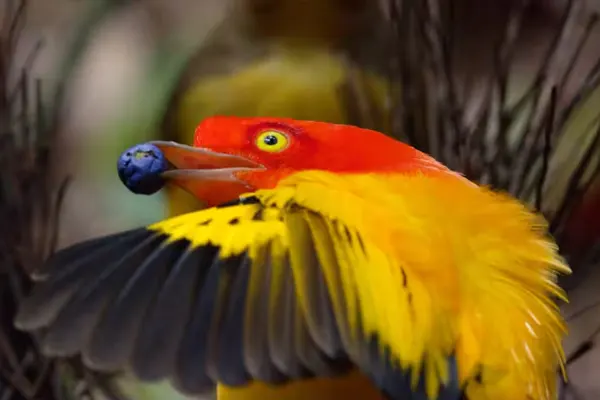
- Fruits: They are particularly fond of figs, but they also eat a variety of other fruits, such as berries, drupes, and bananas.
- Berries: They eat a variety of berries, such as blueberries, raspberries, and strawberries.
- Invertebrates: They eat a variety of invertebrates, such as insects, worms, and snails.
Interesting Facts
They are one of the most brilliantly colored birds in the world. Male flame bowerbirds have flame-orange and golden-yellow plumage, while females are olive-green, brown, and buff.
They build elaborate bowers to attract mates. Male flame bowerbirds spend weeks building their bowers, which are typically oval-shaped and made from sticks and leaves. They decorate their bowers with a variety of colorful objects, such as blueberries, beetles, and shells.
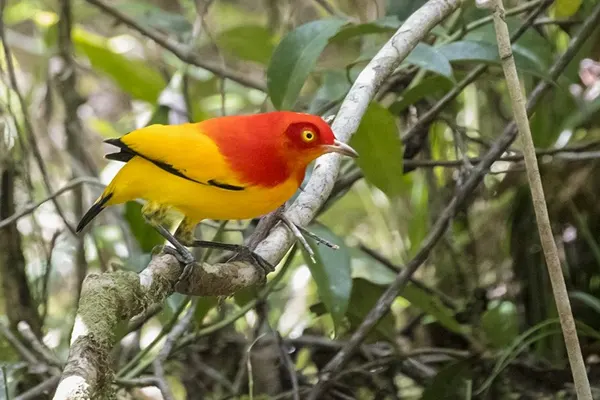
- They are cooperative breeders. Female flame bowerbirds often work together to raise their young. They will build a communal nest and then take turns incubating the eggs and feeding the chicks.
- They are excellent mimics. Flame bowerbirds can mimic the calls of other birds, as well as the sounds of other animals and objects. They use this ability to attract mates and to defend their territories.
- They are found only in New Guinea. Flame bowerbirds are endemic to New Guinea, where they are found in rainforests at elevations up to 1,500 meters (4,900 feet).
- They are threatened by habitat loss. Flame bowerbirds are classified as Near Threatened by the IUCN Red List. Their population is threatened by habitat loss due to deforestation and logging.
Nesting Habits
Flame bowerbirds (Sericulus ardens) are renowned for their elaborate courtship displays and fascinating nesting habits. Unlike their male counterparts who construct elaborate bowers to attract mates, female flame bowerbirds take on the sole responsibility of nest building, incubation, and chick rearing.
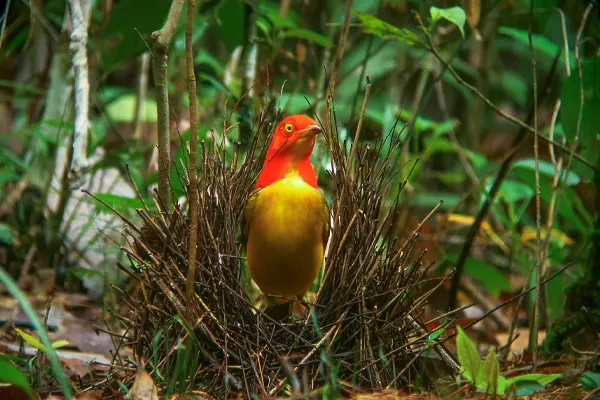

- Nest Construction: Female flame bowerbirds typically construct their nests in dense vegetation, often within the lower canopy of the rainforest. They prefer secluded locations, often hidden amidst ferns, vines, and other foliage, providing protection from predators and harsh weather conditions. Their nests are relatively simple structures, resembling shallow cups or saucers. They are typically made from a combination of leaves, twigs, mosses, and other soft materials.
- Nest Location: Flame bowerbirds typically place their nests at varying heights, ranging from a few meters above the ground to as high as 20 meters. The choice of nest location is likely influenced by factors such as predator avoidance, access to food resources, and microclimate conditions.
- Nesting Season: The nesting season for flame bowerbirds generally coincides with the peak fruit production in their rainforest habitat. This timing ensures that females have an abundant supply of food to support their own energy needs and those of their developing chicks.
- Clutch Size: Female flame bowerbirds typically lay a single clutch of two eggs per breeding season. The eggs are oval-shaped and vary in color from pale blue to cream, often speckled with darker markings.
- Incubation: The incubation period for flame bowerbird eggs is approximately 21-22 days. During this time, the female remains at the nest, providing warmth and protection to the developing embryos. She may also leave the nest briefly to forage for food, leaving the eggs exposed for short periods.
- Chick Rearing: Upon hatching, flame bowerbird chicks are altricial, meaning they are born helpless and require extensive parental care. The female flame bowerbird takes on the sole responsibility of chick rearing, providing them with food, warmth, and protection. Chicks develop rapidly and fledge from the nest within approximately 21-23 days.
The nesting habits of flame bowerbirds play a crucial role in their reproductive success and survival in the rainforest ecosystem. Their choice of nest location, nesting materials, and parental care strategies reflect their adaptation to the challenges and opportunities of their rainforest habitat. By understanding their nesting habits, we gain a deeper appreciation for the complex lives of these fascinating birds.
Melodious Song & Vocalizations
Male flame bowerbirds are particularly vocal, using their calls to attract mates and defend their territories. Their calls are typically harsh, rasping, and hissing notes, often described as “shh” or “ksh” sounds. They also emit deep, hollow whistled notes and imitate the calls of other birds. These vocalizations serve as a signal of the male’s fitness and reproductive potential, attracting females to his bower.

- Duets: Flame bowerbirds may also engage in duets, where both the male and female sing together. These duets are thought to strengthen pair bonds and reinforce territorial claims.
Female flame bowerbirds have a wider range of vocalizations than males. They use their calls to communicate with each other, especially when defending their nests and territories. Their calls are typically softer and higher-pitched than those of males, often resembling chirps, whistles, and trills. They also emit alarm calls to warn of potential predators.
Ecological Significance
Flame bowerbirds are ecologically significant members of the rainforest community. Their diverse ecological roles help to maintain the health, biodiversity, and productivity of these vital ecosystems.
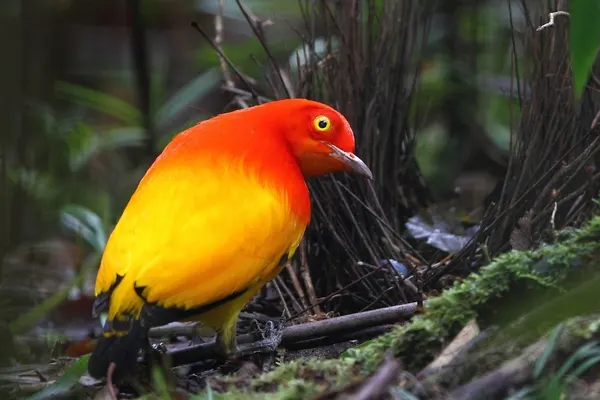
| Ecological Role | Description |
|---|---|
| Seed dispersal | Flame bowerbirds consume a variety of fruits and berries, and they disperse the seeds of these plants throughout the rainforest as they move from one feeding area to another. This helps to regenerate and maintain the diversity of plant life in the rainforest. |
| Pollination | As flame bowerbirds forage for insects and nectar among the flowers of rainforest plants, they inadvertently transfer pollen from one flower to another, facilitating pollination and reproduction of these plants. This contributes to the overall reproductive success of plant species in the rainforest. |
| Nutrient cycling | Flame bowerbirds’ droppings, which contain undigested plant matter and seeds, contribute to nutrient cycling in the rainforest. When these droppings decompose, they release essential nutrients back into the soil, which can then be taken up by plants for their growth. |
| Predator-prey interactions | Flame bowerbirds serve as a food source for a variety of predators, including snakes, lizards, and birds of prey. Their presence in the rainforest helps to maintain the balance of predator-prey relationships and contributes to the overall stability of the ecosystem. |
Conservation Status
The flame bowerbird is a beautiful and unique bird that is an important part of the rainforest ecosystem. However, the species is facing a number of threats that could lead to a decline in its population in the future. Conservation efforts are underway to protect flame bowerbirds, but more needs to be done to ensure the long-term survival of this species.

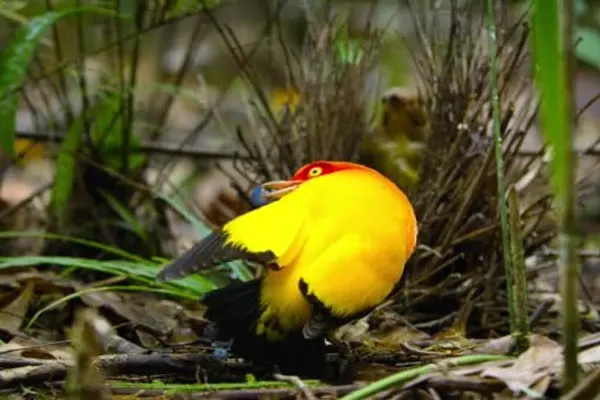
- Habitat Loss: The primary threat to flame bowerbirds is habitat loss due to deforestation and logging. Rainforests are being cleared for agriculture, timber, and other purposes at an alarming rate, and this is reducing the amount of suitable habitat available for flame bowerbirds.
- Hunting: Flame bowerbirds are also hunted for their meat and feathers. They are considered to be a delicacy in some parts of New Guinea, and their feathers are used in traditional ceremonies.
- Climate Change: Climate change is also a threat to flame bowerbirds. As the climate warms, the rainforests are becoming drier and more fragmented. This is making it more difficult for flame bowerbirds to find food and mates, and it is also increasing the risk of wildfires, which can destroy their habitat.
Research and Ongoing Studies
Flame bowerbirds are fascinating creatures with complex behaviors and intricate courtship displays. Researchers have been studying these birds for many years to better understand their biology, ecology, and conservation needs.
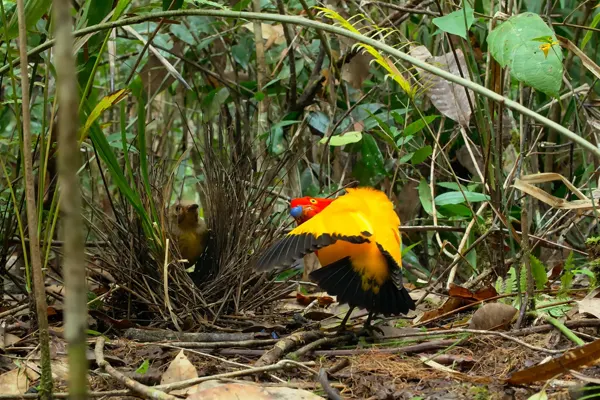
- Investigating Bower Construction and Decoration: Scientists are delving into the underlying mechanisms and motivations behind the elaborate bower construction and decoration of male flame bowerbirds. They are examining the role of cognitive abilities, social learning, and mate preferences in shaping the diversity and complexity of bowers.
- Exploring Cooperative Breeding Dynamics: Cooperative breeding, where multiple females contribute to raising a single clutch, is a unique aspect of flame bowerbird behavior. Researchers are investigating the factors that influence cooperative breeding, the benefits and costs associated with this arrangement, and the genetic relationships between cooperatively breeding females.
- Unraveling Vocal Communication: Flame bowerbirds possess a rich vocal repertoire, encompassing a range of calls, whistles, and imitations. Researchers are studying the structure, function, and context of these vocalizations to gain insights into their communication systems, territorial defense strategies, and courtship interactions.
- Understanding Reproductive Ecology: The reproductive ecology of flame bowerbirds is complex and intriguing. Researchers are investigating aspects such as mate choice, breeding strategies, parental care, and offspring survival to understand the factors influencing their reproductive success.
- Assessing Population Dynamics and Conservation Status: Monitoring flame bowerbird populations is crucial for assessing their conservation status and identifying potential threats. Researchers are conducting surveys, using GPS tracking, and analyzing genetic data to track population trends, habitat use, and movement patterns.
- Investigating the Impacts of Habitat Loss and Climate Change: Habitat loss and climate change pose significant threats to flame bowerbird populations. Researchers are studying the direct and indirect impacts of these threats on the survival, reproduction, and behavior of flame bowerbirds to inform conservation strategies.
These ongoing research efforts are shedding light on the fascinating lives of flame bowerbirds and contributing to the development of effective conservation measures to protect these remarkable birds and their rainforest habitats.
Educational and Ecotourism
Educational Programs
- School Visits and Curriculum Integration: Integrate flame bowerbirds into school curricula for biology, ecology, and environmental science classes. Engage students in interactive learning activities, such as simulating bower construction or analyzing bird calls, to enhance their understanding of these fascinating birds.
- Public Lectures and Workshops: Organize public lectures and workshops led by ornithologists or conservationists to educate the public about flame bowerbirds, their role in the ecosystem, and ongoing conservation efforts. These events can raise awareness and inspire stewardship for these remarkable birds.
- Interactive Exhibitions and Displays: Develop interactive exhibitions and displays at museums, nature centers, and zoos to showcase the beauty and biology of flame bowerbirds. These exhibits can incorporate multimedia elements, hands-on activities, and educational games to engage visitors and enhance their learning experience.

Ecotourism Initiatives
- Guided Birdwatching Tours: Organize guided birdwatching tours in rainforest areas where flame bowerbirds are found. Experienced guides can lead participants through the forest, pointing out flame bowerbirds and other bird species, and sharing insights into their behavior and ecology.
- Bower Observation Hides: Establish unobtrusive observation hides near flame bowerbird breeding sites. These hides allow visitors to observe the birds’ courtship displays and nesting behaviors without disturbing their natural activities.
- Community-Based Ecotourism: Engage local communities in ecotourism initiatives related to flame bowerbird conservation. Provide training and support to community members to develop and manage ecotourism activities, such as guided tours, birdwatching trails, and educational programs.
- Responsible Ecotourism Practices: Promote responsible ecotourism practices to minimize the impact of tourism on flame bowerbird populations and their habitats. Encourage visitors to follow guidelines such as staying on designated trails, avoiding loud noises, and respecting the birds’ nesting sites.
Conclusion
The flame bowerbird is a captivating creature that embodies the beauty and intricacy of the rainforest ecosystem. Its vibrant plumage, elaborate courtship displays, and unique cooperative breeding behaviors make it a fascinating scientific research subject and a captivating ecotourism attraction.
As we delve deeper into the lives of flame bowerbirds, we gain a profound appreciation for their ecological significance and the threats they face in a rapidly changing world. Their role as seed dispersers, pollinators, and vital contributors to the rainforest’s biodiversity highlights the importance of preserving their habitats and ensuring their long-term survival.
By fostering educational programs, promoting responsible ecotourism practices, and supporting ongoing conservation efforts, we can play a crucial role in safeguarding these remarkable birds and the vibrant rainforests they call home. The flame bowerbird serves as a reminder of the interconnectedness of all living things and the urgent need to protect our planet’s precious biodiversity.


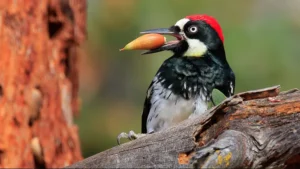
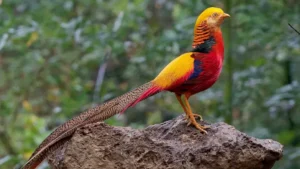
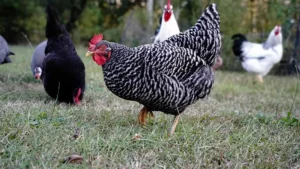

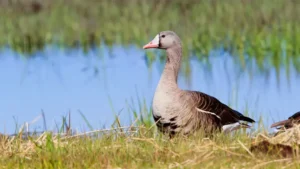
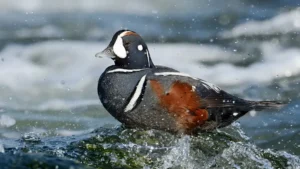
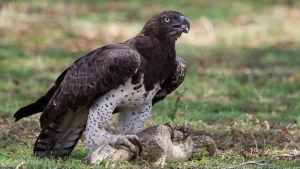
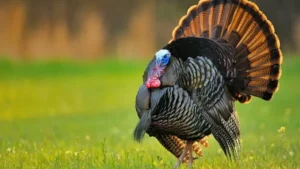
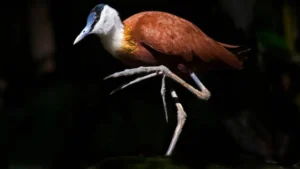
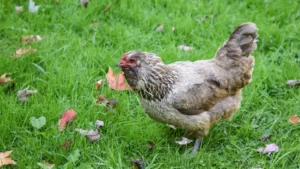

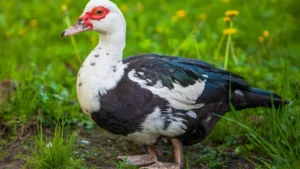
Leave your comment